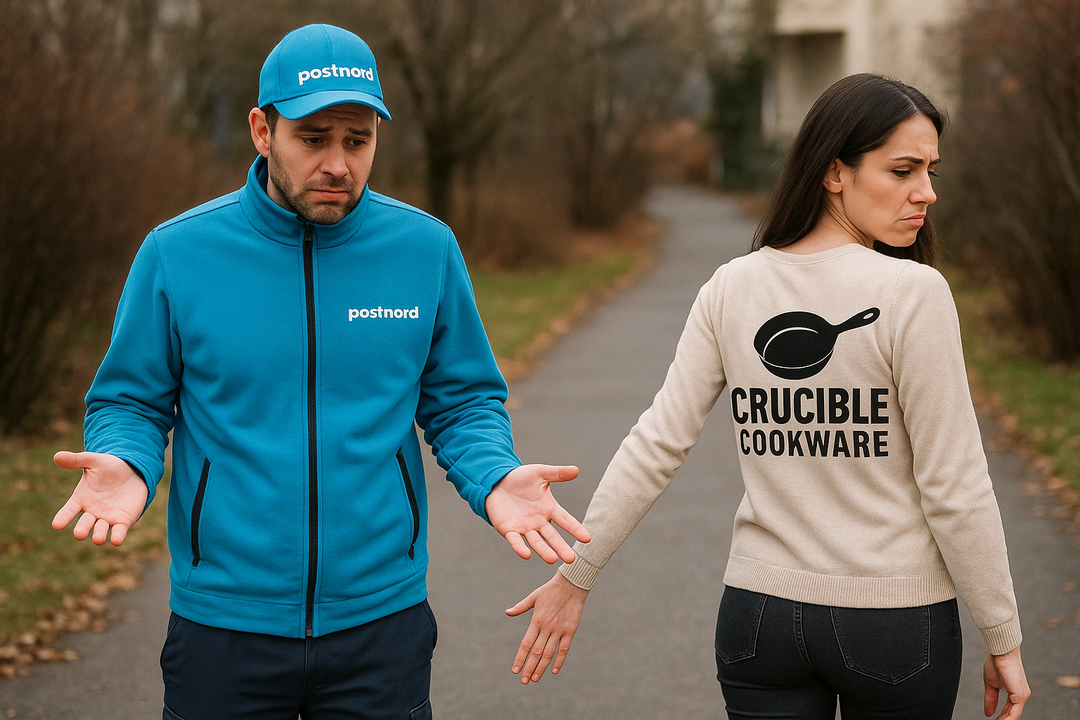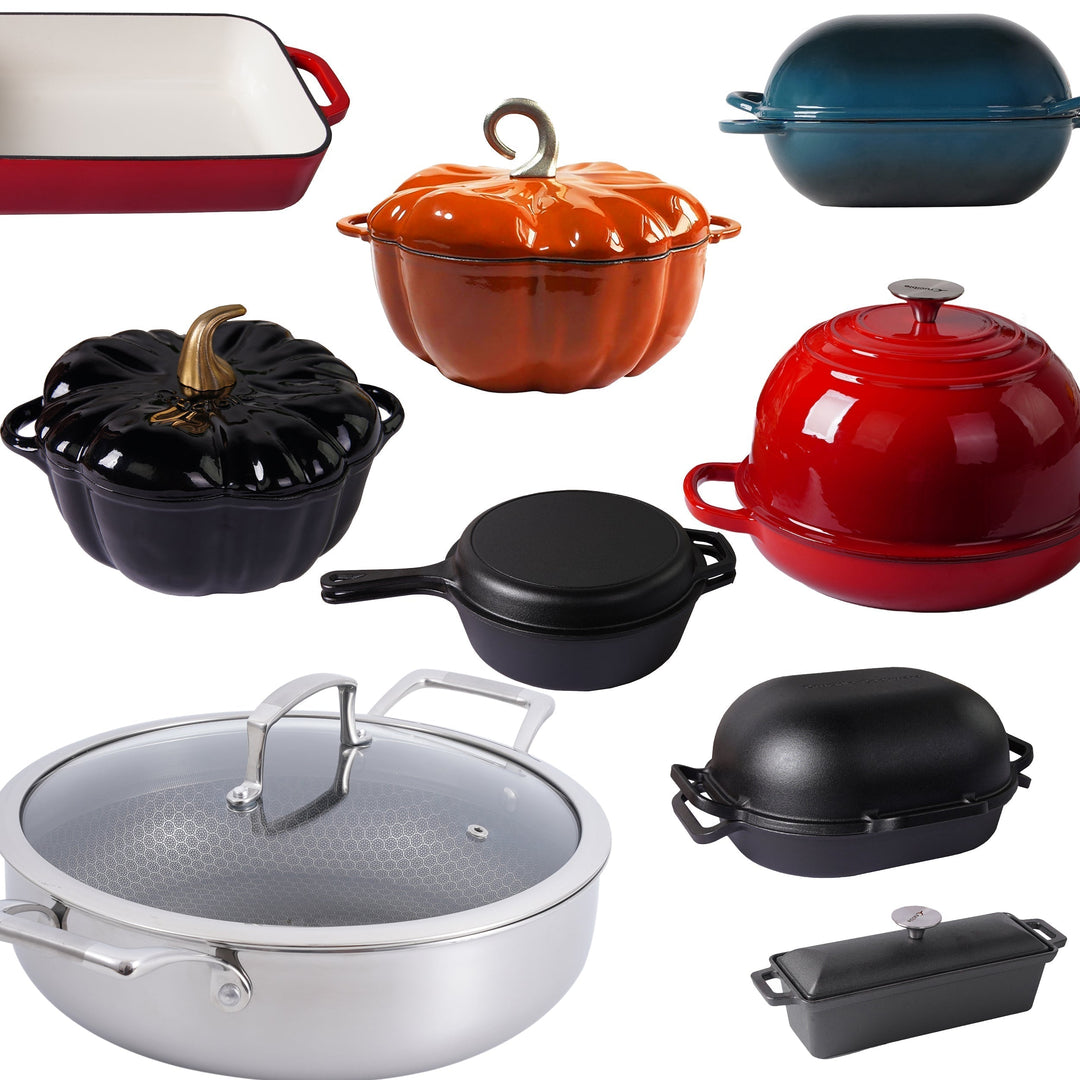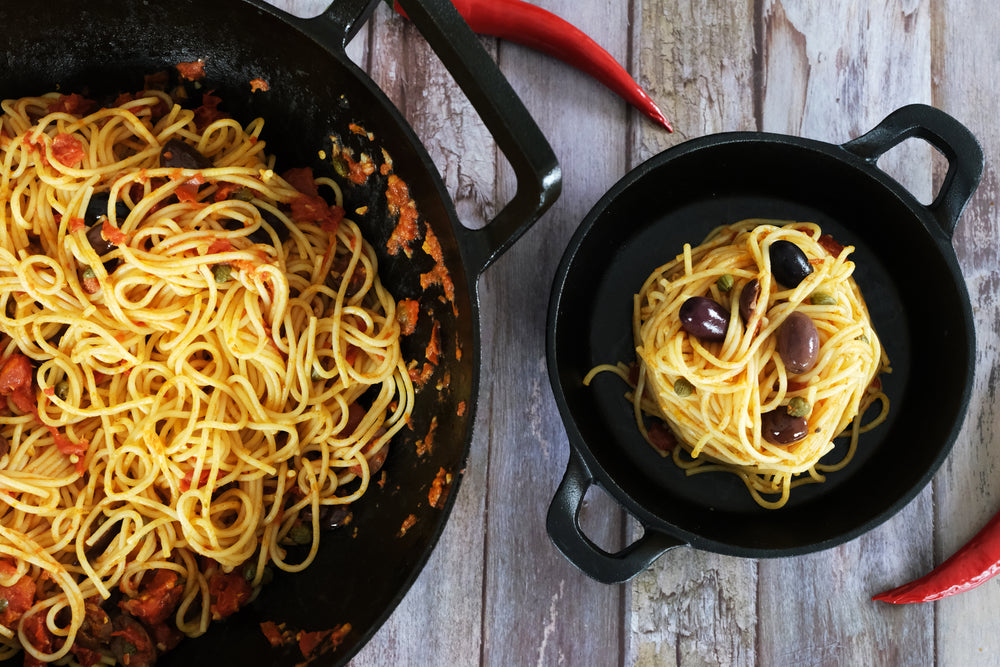Plat Balti en fonte vs. Wok en fonte : Révéler le style distinct des ustensiles de cuisine

Quand il s'agit de cuisiner, les bons outils peuvent faire toute la différence. Deux choix populaires parmi les passionnés de cuisine sont le plat balti en fonte et le wok en fonte. Ces deux options de cuisson ont chacune leurs caractéristiques uniques, qui se prêtent à des styles de cuisson et des plats spécifiques. Dans cet article de blog, nous explorerons les différences entre un plat balti en fonte et un wok en fonte, mettant en lumière leur style distinct en cuisine.
Forme et design :
La première différence notable entre un plat balti en fonte et un wok en fonte réside dans leur forme et leur design. Un plat balti présente généralement un fond large, peu profond et rond avec des côtés hauts et inclinés. En revanche, un wok a un fond profond et arrondi avec des côtés raides et inclinés. Le fond large du plat balti permet un plus grand contact avec la chaleur, tandis que les côtés profonds et inclinés du wok facilitent le mélange et le remuage des ingrédients sans effort.
Style de cuisson :
Le style de cuisson associé à chaque ustensile est un autre aspect qui différencie le plat balti en fonte et le wok en fonte. Un plat balti est couramment utilisé pour préparer des currys balti, une cuisine traditionnelle sud-asiatique caractérisée par la cuisson rapide à la poêle des épices, légumes et viandes à feu vif. Les plats balti excellent dans la rétention et la distribution uniforme de la chaleur, ce qui les rend idéaux pour obtenir les saveurs et textures uniques de la cuisine balti.
D'autre part, le wok en fonte est synonyme de sautés asiatiques. Ses côtés hauts et inclinés le rendent parfait pour le mélange rapide et le remuage des ingrédients, assurant une distribution uniforme de la chaleur et préservant le croquant naturel et la fraîcheur des légumes. Le design du wok permet différentes zones de chaleur, permettant aux chefs de saisir, frire, cuire à la vapeur ou frire en profondeur avec précision.
Distribution et rétention de la chaleur :
Les ustensiles en fonte sont réputés pour leur exceptionnelle capacité à distribuer et retenir la chaleur. Cependant, les deux ustensiles diffèrent dans leur performance à cet égard. Le plat balti en fonte, avec sa base plus large, offre une plus grande surface de contact avec la source de chaleur, permettant une distribution plus efficace de la chaleur sur tout le plat. Cette caractéristique assure une cuisson uniforme et évite les points chauds, résultant en un profil de saveur bien équilibré.
En revanche, la forme profonde du wok en fonte concentre la chaleur au fond, facilitant une chaleur intense pour le sauté. Les côtés raides permettent de pousser les ingrédients vers les zones plus fraîches tout en gardant ceux au fond très chauds. Cette distribution contrôlée de la chaleur permet une cuisson rapide tout en conservant les textures et saveurs caractéristiques des plats sautés.
Polyvalence :
Bien que le plat balti et le wok excellent dans leurs styles de cuisson respectifs, ils possèdent également un certain degré de polyvalence. Un plat balti en fonte peut être utilisé pour d'autres méthodes de cuisson telles que le sauté, le mijotage, voire la cuisson au four. Son design large et peu profond permet de dorer facilement viandes ou légumes avant de cuire lentement un ragoût ou un curry. De même, un wok en fonte peut être utilisé pour la friture en profondeur, la cuisson à la vapeur, et même l'ébullition grâce à son intérieur profond et spacieux.
Conclusion :
Quand il s'agit de choisir entre un plat balti en fonte et un wok en fonte, tout dépend des préférences personnelles et des types de plats que vous aimez cuisiner. Le design large et peu profond du plat balti est idéal pour les currys balti et les méthodes de cuisson polyvalentes, tandis que la forme profonde et les côtés inclinés du wok excellent pour les sautés asiatiques et diverses techniques culinaires. En fin de compte, ces deux ustensiles en fonte sont des outils indispensables dans une cuisine bien équipée, vous permettant de libérer votre créativité culinaire grâce à leurs attributs uniques.
















Laisser un commentaire